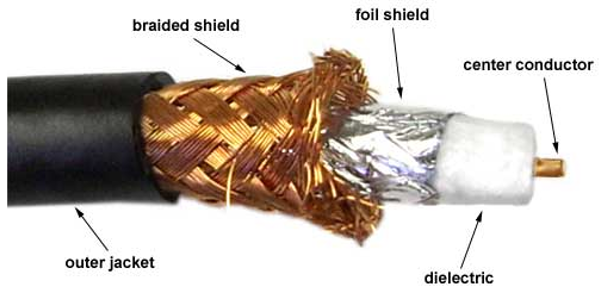Home »
Computer Network
Coaxial Cable in Computer Network
Computer Network | Coaxial Cable: In this tutorial, we will learn about the Coaxial Cable. We will first define it, describe its standards and its connectors and types of Coaxial Cable and will then illustrate it with its diagram.
By Monika Jha Last updated : May 05, 2023
What is Coaxial Cable?
Higher frequency signals carried by Coaxial Cable than twisted-pair cable, in part because the two media are constructed quite differently. It does not have two-wire but coaxial cable has a central core conductor of solid or stranded wire (usually copper) enclosed in an insulating sheath.
- After that, it is encased in an outer conductor of metal foil, braid or a combination of the two. It is also usually of copper.
- The outer metallic wrapping works both as a shield against noise and as the second conductor, which completes the circuit.
- Then the outer conductor is enclosed in an insulating sheath and the whole cable is protected by a plastic cover.

Coaxial Cable
Coaxial Cable Standards
The designs of coaxial cable are categorized by their radio government (RG) ratings. A unique set of physical specifications defines by each RG number.
Specifications such as the wire gauge of the inner conductor, the thickness and type of the inner insulator also the construction of the shield and type of the outer casing used and the size of this casing.
RG ratings define each cable for a specialized function. The following are a few of the common ones:
- RG-8 – It is used in thick Ethernet
- RG-9 – It is also used in thick Ethernet
- RG-11 – It is used in thick Ethernet
- RG-58 – It is used in thin Ethernet
- RG-59 – Used for Television
Coaxial Cable Connectors
Categories of Coaxial Cables
There are two categories of coaxial cables:
1. BaseBand
For digital transmission, a 50 ohm (Ω) coaxial cable is used. It defines a process of transmitting a single signal at a time with a very high speed. It is generally used for LAN's. We can consider a drawback that is needs amplification after every 1000 feet.
2. BroadBand
Analog transmission on standard cable television cabling is used by this. It defines a process of transmitting multiple signals simultaneously with very high speed. It covers a large area as compared to Baseband Coaxial Cable.
Advantages of Coaxial Cables
The following are the advantages of coaxial cables:
- High bandwidth
- Easy to install and pocket-friendly
- Better protection from noise
- Scaling is also better
- In this Data, transmission can be done without distortion
Disadvantages of Coaxial Cables
The following are the disadvantages of coaxial cables:
- They're more prone to lightning strikes
- Compare with fiber optic cables it covers less distance
- They carry less bandwidth as compared with both fiber optic and twisted-pair cables
- If a single cable is failed then the entire network can be interrupted
Applications of Coaxial Cable
The following are the applications of coaxial cables:
- In analog telephone networks where a single coaxial network could carry 10,000 voice signals, Coaxial cable was widely used.
- In Cable TV networks coaxial cables are used. A cable TV network uses RG-59 coaxial cable.
- It is used in traditional Ethernet LANs. Because it is of high bandwidth, and consequence high data rate,
- In early Ethernet LANs for digital transmission, coaxial cable was chosen.
Performance of Coaxial Cable
The Performance of Twisted Pair Cables and Coaxial cable can be measured in the same way. The attenuation is much higher in the coaxial cable as compared with twisted-pair cable.
In other words, although much higher bandwidth is contained by the coaxial cable, the signal rapidly weakens and frequently requires the use of repeaters.
Advertisement
Advertisement